Catalonia
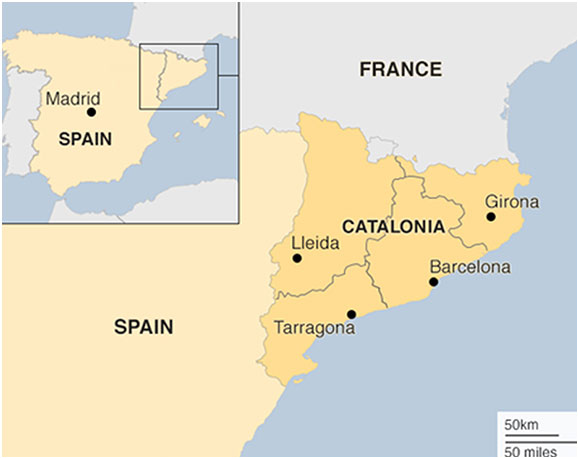
Catalonia is one of Europe’s ‘hidden’ regions. Its nature, climate and history create a setting of haunting beauty that is hard to grasp, but never fails to seduce. With its lush vegetation propped against the blue and green immensity of the sea and the majestic mountains of the high Pyrenees, Catalonia is a place of rare beauty.
The capital Barcelona is perhaps Europe’s most exciting city, and the reinvention of the city has given the whole region a new self-confidence and vitality. Needless to say, Catalans are proud of their heritage and traditions, and offer a warm welcome to foreign visitors.
Catalonia is a wonderfully warm region of Europe. It has a temperate, Mediterranean climate with hot, dry summers and mild winters with irregular rainfall. If there is one feature characteristic of the Catalonian region, it is the light, a direct result of the great number of hours of sunlight, which marks the cheerful nature and hospitality of the locals.
The region’s curiousness perhaps explains the fantastical minds of its most famous offspring – Salvador Dalí and Antoni Gaudí, whose influences run strong in the cities, parks and galleries. Barcelona may bask in all the glory, but those in the know come to Catalonia for the landscapes, from the high Pyrenees to the golden sandy coves, from the endlessly flat rice paddies to the surreal Volcanic Park, all traversed by well-marked dedicated walking and cycling trails. Pedal or hike to provincial pueblos, picturesque cascades and canyons, traditional markets and ancient caves and work up an appetite for a plate of wild boar, giant prawns and fresh mussels washed down with chilled Cava – all the produce of Catalonia’s deltas, mountains and Mediterranean terrains.
Diversity of landscapes
Despite just being one region, Catalonia’s landscapes range from 3,000m-high Pyrenean peaks, to the warm, turquoise waters of the Mediterranean, passing plateaus, forests, rice paddies and ravines along the way. You can ski and sunbathe in the same day, while cyclists and hikers can spend each day travelling through an entirely new backdrop, from wildflower meadows to mountaintop monasteries.
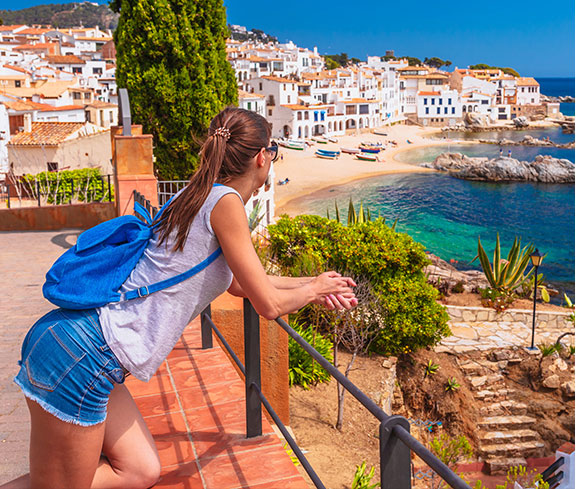
Local produce
Mar i muntanya – sea and mountain – is the key to Catalan cuisine. Mussel farms and fishing boats capture the essence of the ocean; the fertile soil nurtures vineyards, olive groves, rice paddies and wild herbs; and the sausages, baked lamb and succulent chicken will delight carnivores. Even better, everyone is so keen to share the fruits of their land that your plate will be filled again – and each dish will have its own story.
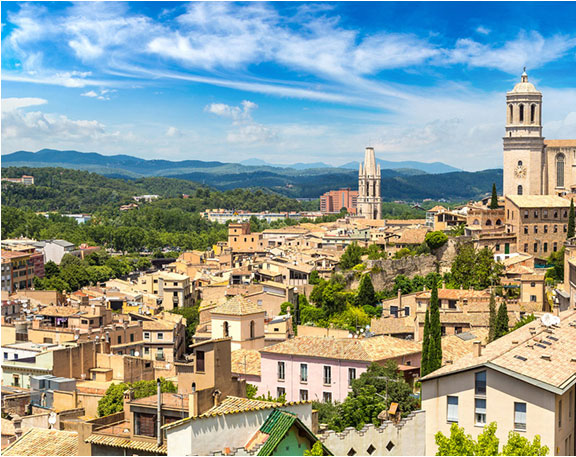
Girona
Glamourous Barcelona leaves a lot for other cities to live up to. But those who penetrate the walls of ancient Girona will find a city with plenty of charm – and none of Barcelona’s crowds. The Medieval Quarter is actually a relatively “modern” district – parts of Girona date back to Roman times. The Jewish Quarter is one of the most picturesque; visit the Ramblas, market places and cafes for a true taste of urban Catalonia.
Barcelona
It’s one of Europe’s – if not the world’s – most hyped cities, but we just can’t fault Barcelona. The sun-drenched, beachside regional capital boasts vibrant markets, street performers, awesome architecture, world-class restaurants, astonishing art and nightlife to keep you entertained ’til dawn. It epitomises the Spanish good life, managing to be both packed with excitement yet laid back and Mediterranean.
The Pyrenees
The eastern end of the Pyrenees creep into Catalonia, providing a (frequently snow-capped) backdrop to this region’s already marvellous scenery. Experience the slopes with the stomach-churning Cremallera railway, or take it easy in the ancient alpine towns in the foothills. There is skiing, whitewater rafting, kayaking and world-class mountain biking… as well as Romanesque churches and prehistoric caves.
Cycling
One of the best road biking spots in the world, Catalonia frequently plays host to international teams who come to train in its varied terrain. But novices shouldn’t be put off; there are plateaus and the perfectly flat Ebro Delta, as well as the Greenway – dedicated, paved walking and cycling trails.
Walking/Hiking
Walking in Catalonia means undulating but easy-going paths through unspoilt coastline, deep-green farmland, orchards, olive groves and vineyards that welcome you in for a tasting. It means fresh seafood on your plate every evening in one of Europe’s most revered gastronomic destinations, tapas bars, sleepy hillside monasteries and local markets. As you get closer to the Pyrenees it can mean steeper, more challenging terrain that rewards with sublime views. Or how about crossing a field of extinct volcanoes covered in thick vegetation in Garroxta? Our walking holidays in Catalonia are enormously diverse, but what they all have in common is their capacity to keep motivating you to see what’s around the next bend in the trail.
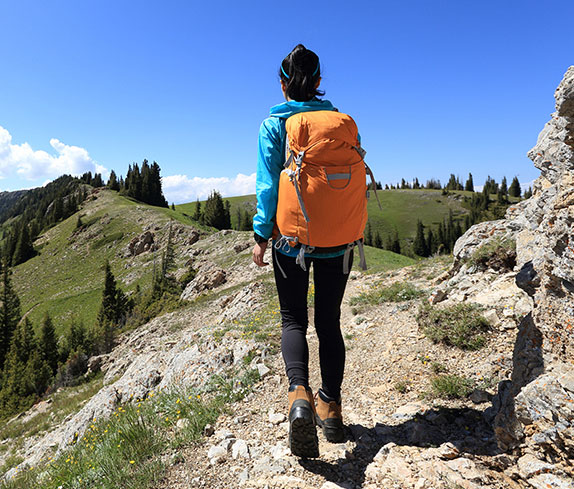
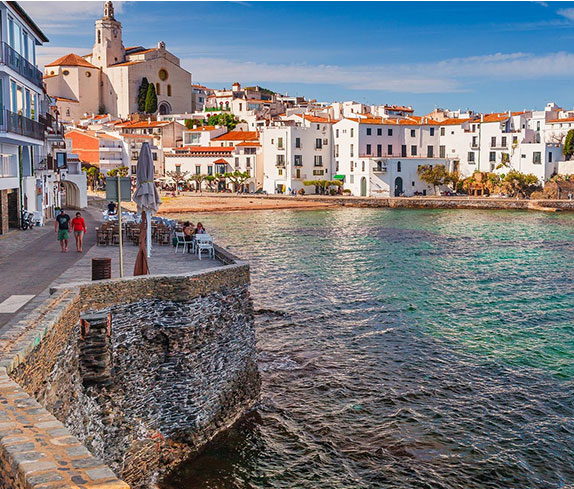
The Costa Brava
We totally rate the Costa Brava, though perhaps not in the way you would think… Despite the name, the “Costa” covers a lot more than the coast, and while the parts bathed by the Mediterranean are perhaps the best known, it’s the inland treasures that keep travellers coming back for more. Even in the height of summer you only need to walk a short distance to get away from the beachside sunbathers, and into another world entirely.
Best time to visit
Walkers and cyclists will appreciate the cool of late spring. Even in midsummer, the Mediterranean and Pyrenees provide a refreshing breeze, meaning it is not as insufferable as arid Andalucia. Catalonia is also a fantastic place for winter sun, without the bitter cold of central Spain or the rainclouds of the northwest. Autumn too is pleasant, without the summer heat or crowds.
People & language
Barcelona is a cosmopolitan enclave, with residents from across Spain as well as overseas; the more rural the region, the more patriotic. You’ll score points here for picking up a few local phrases to greet your hosts. Visit a local festival to see the sardana dance, human castles (castells), giants (gegants) or firework festivities (correfoc).
Gastronomy
Any worthy travel book must include a mention of gastronomy. The Catalan cuisine is one of the most prestigious in the world. Internationally famous chefs such as Ferran Adrià, Carme Ruscalleda and the Roca brothers come from here. All have been fundamentally influenced by the country’s traditional gastronomy based on fresh and local produce. This gastronomic intensity gives visitors the exciting opportunity to explore the wonderful depth and flavours of Catalan cuisine.
A brief history of Catalonia
Catalonia has always sat rather uncomfortably on Spain’s north-eastern tip, yet never fully managed to break away. After centuries of being controlled by a central Spanish government, who used this region for their own ends, a Catalan Republic was finally declared again in 1931, though it was short-lived. The Spanish Civil War began in 1936, and as Catalonia held out against the Republicans, they were punished in the ensuing decades of Franco’s dictatorship with the suppression of their language, dance and other cultural traditions. Franco even tried to water down the local culture by encouraging immigration from across Spain, but in testament to the strength of the Catalan character, the spirit survived.
Following Generalísimo’s death and the return to democracy, Catalonia was once again granted autonomy and Catalan was recognised as one of the national languages of Spain. The years of persecution have no doubt heightened their sense of patriotism, and the sardana dance, local cuisine and other Catalan traits are celebrated across the region almost continually from spring to autumn; even the tiniest of villages will stage two or three annual ferias.
There has always been talk of full independence, and local support for this increased during Spain’s economic crisis from around a third to half the population. Catalonia is both the richest and most indebted region, and it grew increasingly unhappy by the pressures placed upon it by Madrid. In 2013, over one and a half million people formed a human chain stretching 400km from the mountains to the sea in support of independence although over the last year the drive for independence has deteriorated with the latest poll results showing that only 42% of the population now want independence and that number is likely to drop over the coming months.
Average Daily Maximum Temperature for Catalonia
| J | F | Ma | A | M | J | J | A | S | O | N | D |
|---|---|---|---|---|---|---|---|---|---|---|---|
| 13 | 14 | 17 | 19 | 22 | 25 | 29 | 29 | 25 | 22 | 19 | 15 |
Sign up to get the latest on our holidays and offers.
We generally send two e-newsletters per month.

